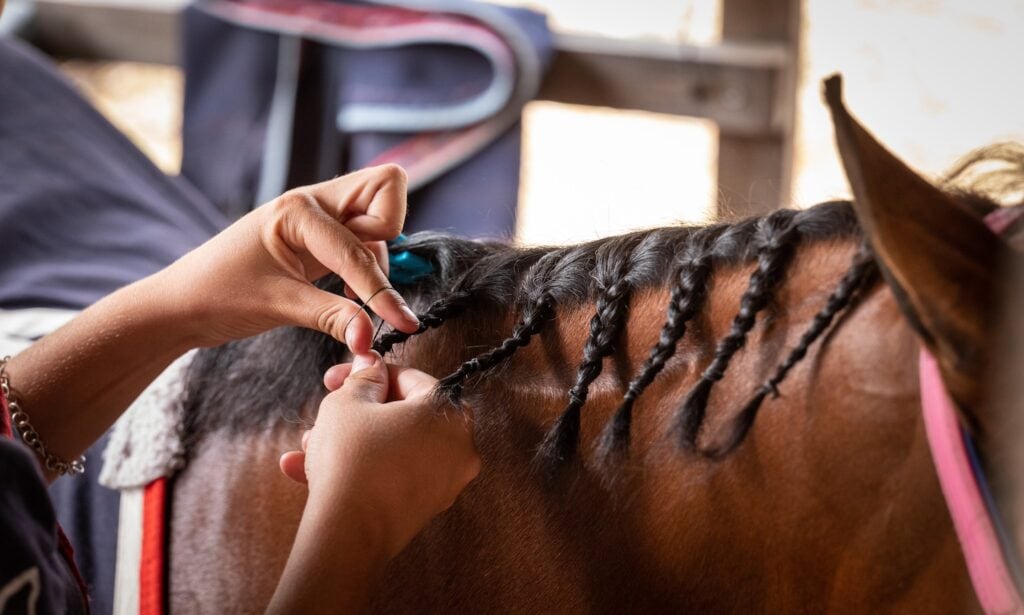Traditional Horse Mane Braids
Each equestrian discipline has its own horse mane braiding traditions:
-
Dressage horses typically show in button or rosette braids.
-
Hunters and equitation horses generally wear tiny, tidy hunter braids.
-
Jumpers sometimes don’t braid at all, but those who do often choose button braids.
-
In breed shows, braid styles vary with the length and thickness of the mane.
Adding the right horse braids can make a thin crest look stronger, visually lengthen a short neck, or even minimize a too-thick neck. No matter what style you’re using, if you start with a slightly dirty mane rather than a freshly washed one, your braids will stay in longer (dirt is grippy!).
Button Braids

Common in many English disciplines, button braids start with a pulled or trimmed mane. The mane is divided into sections and braided down. Then each braid is folded into a ball, or “button,” and secured against the crest of the neck with yarn, waxed thread, or a rubber band. The forelock is braided and rolled into a single button.
Banded button braids are a beginner-friendly style. Using yarn or waxed thread is more challenging but produces neater, longer-lasting braids.
Hunter Braids
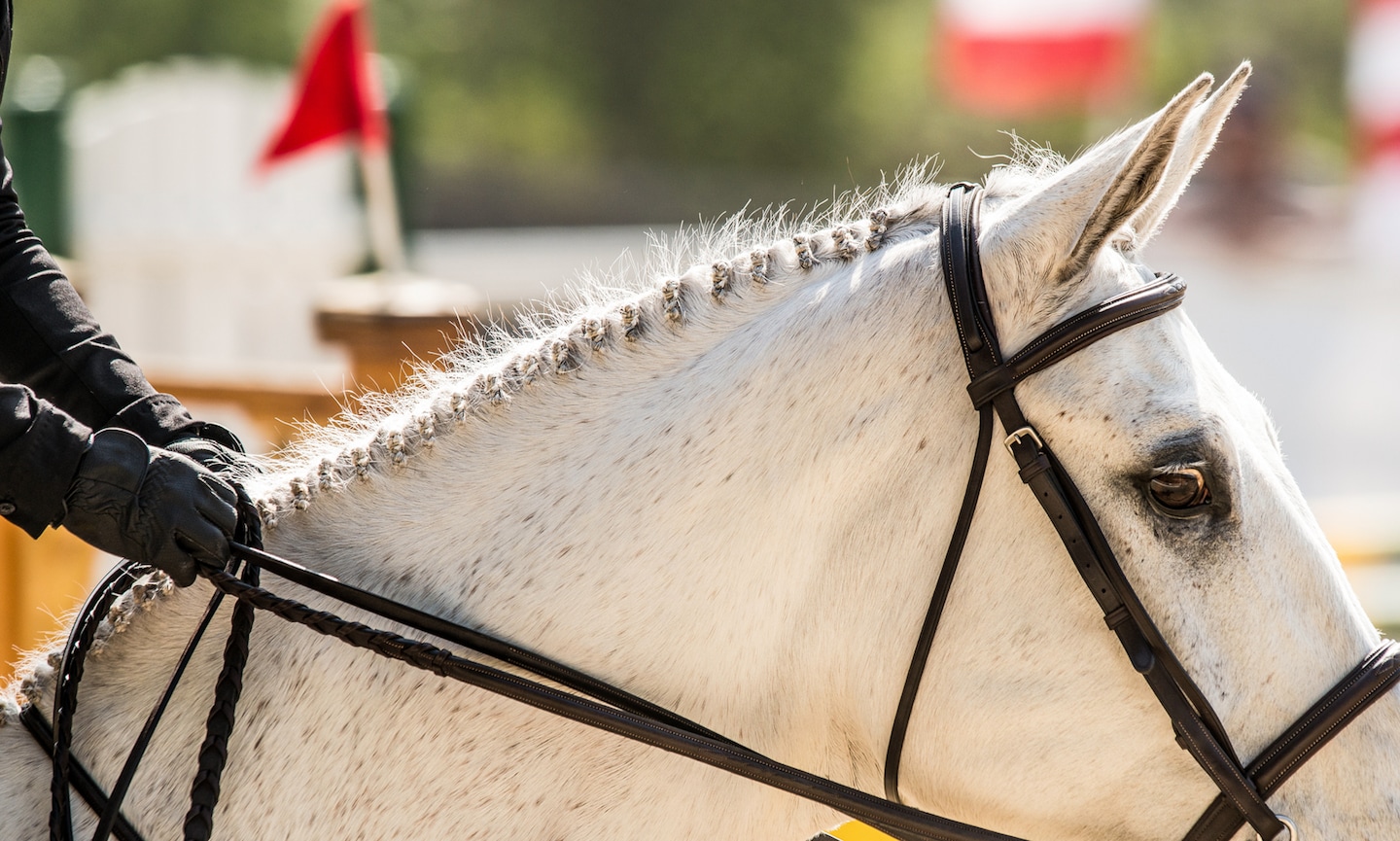
Hunter braids require time and skill to create a beautiful, classic look. A short, thin mane is necessary for this horse braiding style. Many experienced braiders use special combs with retractable blades to achieve the same effect as a pulled mane by cutting instead of pulling.
After the mane is prepared, it’s divided into as many as 40 equal sections, each of which is braided tightly. Hunter braids are sewn into themselves with yarn or waxed thread so that they either fold flat against the neck or stand up like tiny knobs. The forelock is also braided and sewn under.
Rosette Braids
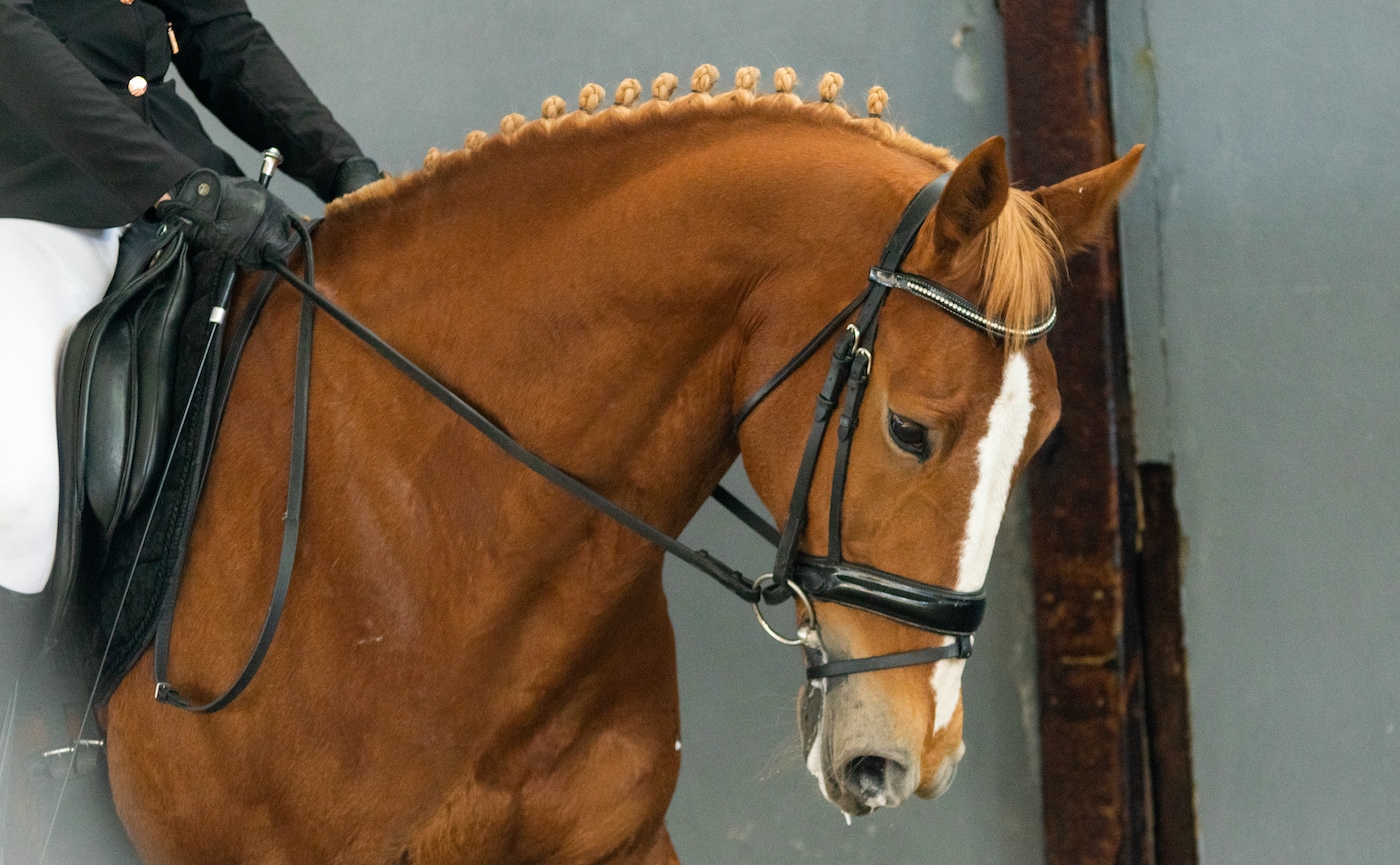
Some people use the term “rosette braids” interchangeably with button braids, while others would say that rosettes are a distinct, larger type of buttons, standing high up on the neck and generally stitched in. Large rosettes are also sometimes called Dutch dressage braids.
Whatever you call them, the key to a fluffy, upturned rosette is to braid upward for the first two or three segments of each braid before braiding tightly down against the neck for the remainder of the braid.
Western Mane Banding

Most Western disciplines don’t braid horses for the show ring, but many “band,” which is exactly what it sounds like: dividing the mane into many equal sections and wrapping a small rubber band around each one.
The bands should be placed just below the crest, at the same height for each section, with each band wrapped the same number of times. Neat, symmetrical banding accentuates the level, smooth movement of a Western horse.
Running Braids
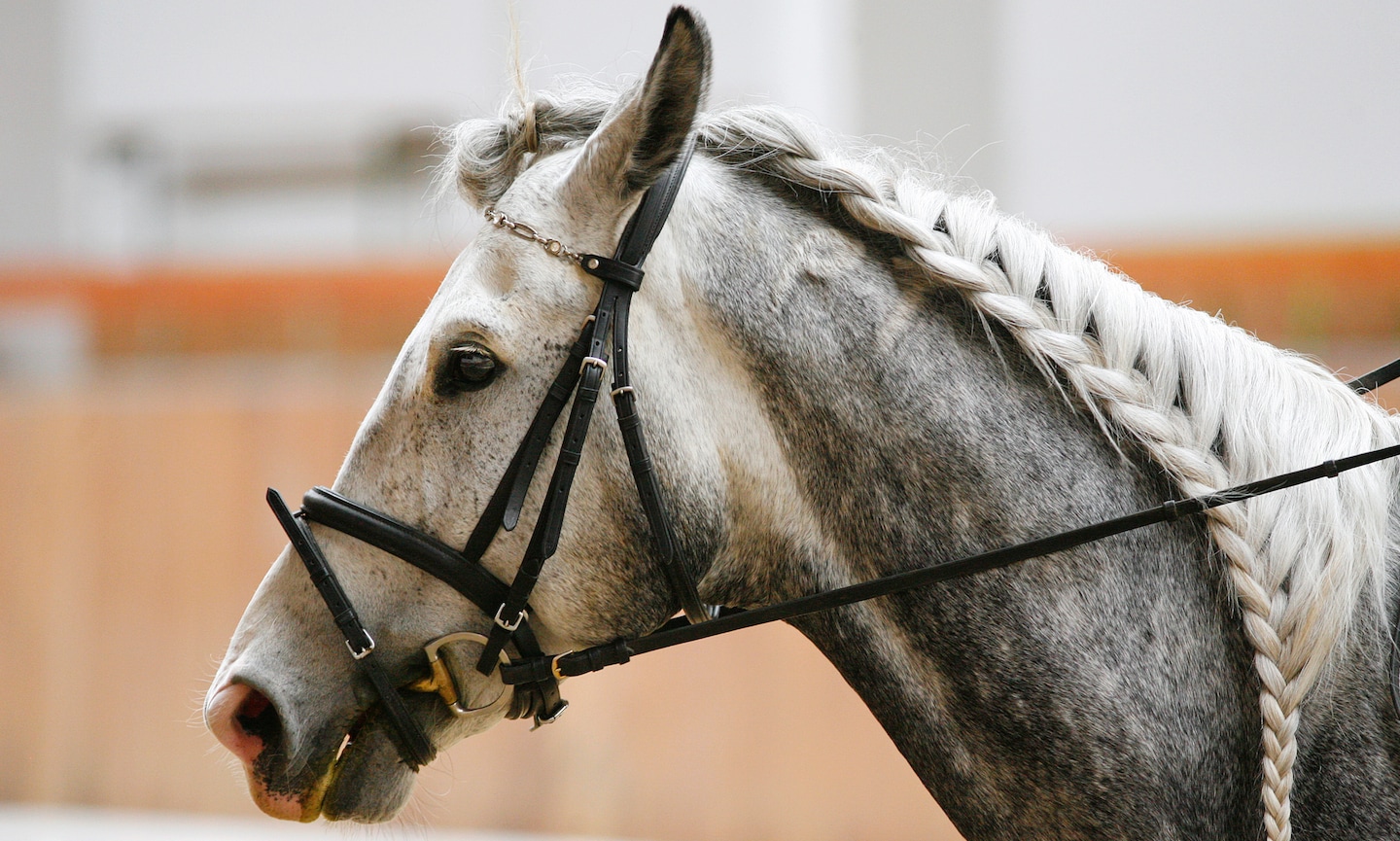
Fun Horse Mane Braids
Three-Strand Braids (Straight Braids)
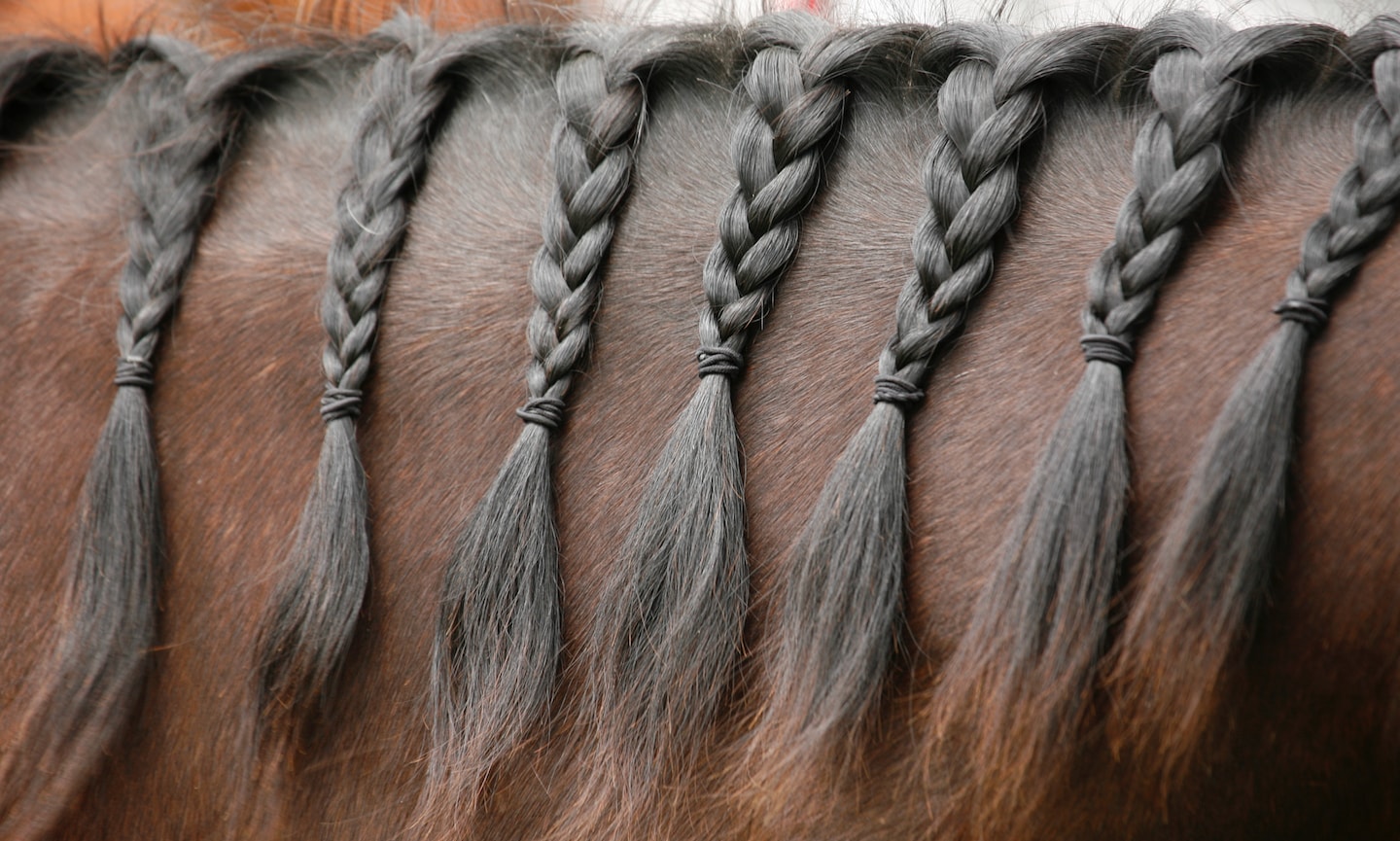
Diamond Braids (Continental Braids)

Tools for Horse Mane Braiding
All you absolutely need to braid a horse’s mane are your hands and bands. If you’ll be trying out more elaborate styles or braiding for shows, you’ll thank yourself for adding these tools to your collection of horse supplies.
Here are some products to consider:
-
Bands matching your horse’s mane, like these Weaver Leather® black/brown bands.
-
Braiding spray to help you grip your horse’s mane as you braid. Quic Braid® is a perennial favorite.
- A detangling brush, like this ergonomic option.
-
A comb for sectioning the mane before you braid, like this sturdy Oster® pick.
-
Thinning shears if you’ll be cutting rather than pulling the mane. Splurge on a nice pair like these and keep them sharpened; you won’t have to replace them for decades.
-
A mounting block with storage, like this one from Horze®, can serve as both a stepstool and your mobile braiding kit.
-
A pull-through tool is a must for hunter braids, rosettes, scallops, or buttons. (Pro tip: you can use a hemostat, which will do double duty in your first aid kit.)
-
Waxed thread or yarn in your horse’s mane color or your stable colors.
-
A seam ripper to remove stitched-in braids when the show is over.
Share:
